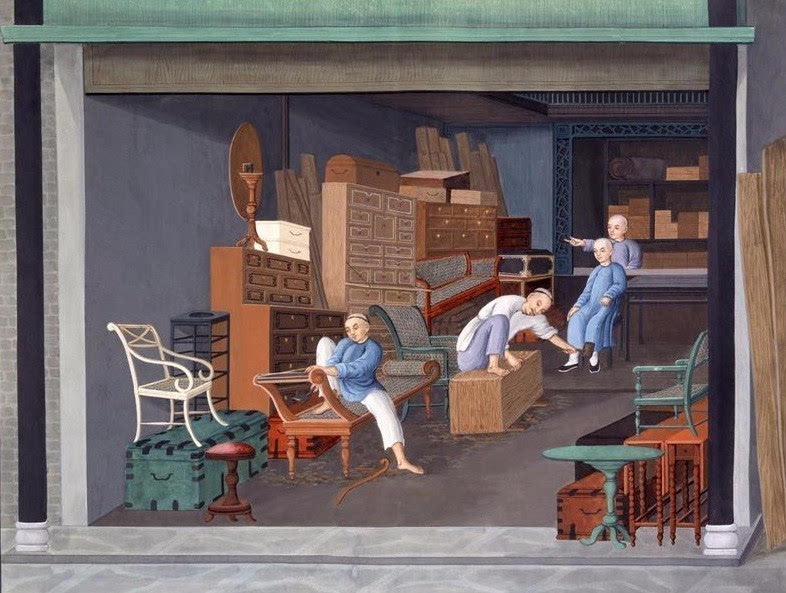Characteristics of Guang furniture

Many ancient Guangdong paintings depict trades and commerce in the Qing Dynasty. It shows that many furniture stores sold furniture that absorbed Western elements with simple and delicate design.
Guang-style furniture represents one of the three important styles of ancient Chinese furniture, which originated from the Ming Dynasty and flourished in the Qing Dynasty. The location known as Thirteen Hongs Street became a shorthand term for trading companies in the Qing Dynasty before the Opium Wars. These companies were established in Guangzhou when Guang-style furniture was at the height of its popularity. This unique commercial house promoted the development of Guang-style furniture.
There was a big furniture market in Guangzhou at that time. Based on ancient Guangdong paintings depicting trade and commerce, many furniture stores sold furniture made of bamboo, rattan and wood. But the fancy and exquisite wood furniture required many expensive wood materials, such as rosewood and padauk.
Guang-style furniture in the Qing Dynasty was famous for dignified, magnificent and luxurious features, and the Thirteen Hongs Street was the center of furniture-making and exports in the mid-Qing Dynasty. In relation to trade, furniture made in the Thirteen Hongs Street embraced three markets: Once was the domestic market—decorative furniture sold to trading companies; the second was to satisfy the demands of various countries’ merchant ships; the third market was furniture for European and American countries and their colonies.
The furniture manufacturing of the Thirteen Hongs Street integrated the characteristics of Western furniture and formed its unique, simple yet elegant style. These represented the origins of Guang-style furniture. Moreover, Guang-style furniture was introduced to the Royal Worship of arts and crafts or zaobanchu, and even affected the formation of Peking style furniture.
The unique artistic style and exquisite technique of the Guang-style benefited from the refined processing division and techniques inherited during the reign of Emperor Qianlong. The public records of the Forbidden City reveal that the Royal Workshop established a branch for making Guang-style furniture in the court in 1736. It is estimated that there 70 craftsmen and 33 carpenters from Guangdong, who accounted for half of the total artisans working in the Royal Workshop in the 18th century. The establishment of the Guang-style branch indicated that Emperor Qianlong has a deep preference for Guang woodwork.
The traditional Guang style focused on delicate decorations on modeling and carvings, which was tremendously influenced by foreign styles of furniture. Its combination of Chinese and Western elements, exquisite techniques and precious wood materials made this furniture popular. However, a good wood carver in the Guang style needs at least three years’ training. So now it is really difficult to cultivate a significant number of Guang style artisans with open minds.
